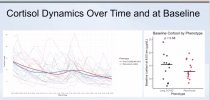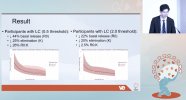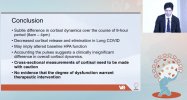We can almost close the thread I would have thought! Cortisol is clearly irrelevant.
Would that disappoint those 1st responders who only want the stress-response option with a multiple choice MUS question to pass their easy-read neuro-rehab exam for re-enablement of crippled sufferers with medically unexplained, endearing but enduring and persistent symptoms of dysregulating, factitious, false illness-belief, which "we all believe and teach" making it the only realistic and pragmatic opportunity (by proxy)?
Especially for wannabee 1st-and-only responders who prefer a psycho-social history from before ME/CFS onset to warrant a traumatised shut-down stress-response - of the most primitive sort - that is playing dead, which didn't work often enough to prevent predators eating the person. Or do these highly trained and subsidised responders have a work-around - for if their other working-theory falls through too
e.g the exaggerated significance of minor pathology, or the misinterpretation of normal sensations - all more or less modifiable illness-beliefs (unless its an intractable illness-belief) therefore I say none of it is NICE-compliant. Its all been clinically explained to put the whole misunderstanding straight, so no more medically unexplained MUS, but the stress-response must explain physiological manifestation of factitious false illness-belief.
So maybe rollout PUS next - the pathology of unknown significance - just not sure where the reflex FND malfunctions fit into the stress. Or would our stress-response vanish from the working-theory in clinical practice? Can the clinicians stop saying: "gut-brain axis - you know - we all know any anxiety always upsets any gut on the planet, so stop worrying, and the 2-way feedback isn't at all relevant .... no ... Oh no:
"our visceral organs do not cause any encephalopathy, ever, that is not what gut-brain axis means". Oh. Ok, but I do agree that sustained stress-chemicals poison the brain, if any. And I finally worked out that axis-blurb is an example of what
@bobbler calls "the hand-waving". Also - no its not la-la land it is the "realistic and pragmatic" opportunity on offer, and for our next trick we shall explain the
pragmatic psychosomatic approach to GI vasculitis (without cortisol).
What I want to know is - which is the neurotransmitter that keeps the brain awake, if not cortisol? And how might cortisol interact with our RAAS thing that is said to be remarkably anomalous? Anyway I must read up the vasopressin thing. My liable kidney is quite upset (on and off and only if... ... ...). But 1st I must read page 1 of this thread.





